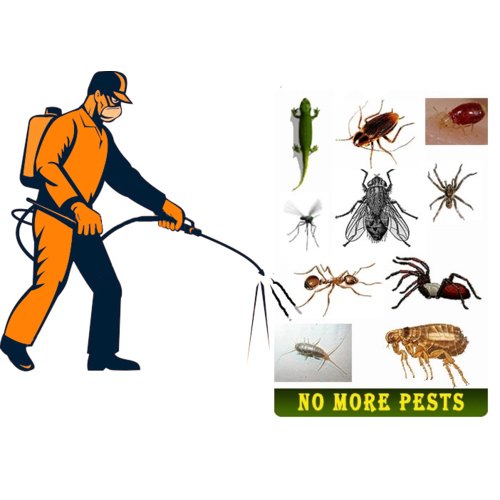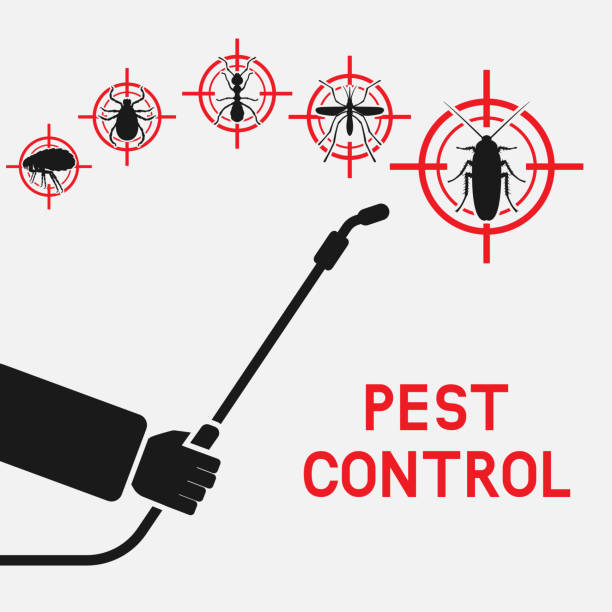Discovering Infestation and Therapy Methods in the World of Parasite Control
The landscape of parasite control includes a myriad of challenges, especially as problems of common family bugs proceed to develop. Comprehending the habits and reproductive patterns of these hassles is important for creating efficient therapy methods. By incorporating preventative actions with advanced management methods, such as Integrated Insect Monitoring (IPM), home owners can much better secure their atmospheres. Nonetheless, the performance of these methods might differ dramatically based on particular scenarios. What underlying variables add to the success or failure of these methods in various setups?

Usual House Vermin
When it concerns handling our living rooms, understanding typical home parasites is important. These bugs not only interrupt our convenience but can also posture health and wellness threats and damages residential property. The most prevalent household bugs consist of ants, cockroaches, rodents, termites, and bed insects.
Ants, commonly seen foraging in kitchen areas, can infect food and develop big nests. Rats, consisting of mice and rats, can cause structural damage and carry diseases like hantavirus and salmonella.
Recognizing the signs of these insects, such as droppings, nests, or attack marks, is crucial for early treatment (Pest Control Lockhart). Appropriate cleanliness methods, sealing entry points, and keeping a clutter-free atmosphere work preventative procedures. By recognizing these common home insects and comprehending their behaviors, property owners can take positive steps to reduce infestations, making sure a healthier living setting
Recognizing Insect Infestations
Pest infestations can rise promptly, turning a small nuisance into a significant trouble if not addressed promptly. Usual aspects contributing to invasions include inadequate cleanliness, structural vulnerabilities, and seasonal modifications that drive insects indoors.
Recognizing the kind of pest is important, as various species show varied habits and reproductive rates. Rats might establish nests in surprise locations while insects like roaches grow in wet atmospheres. Early discovery often depends upon acknowledging signs such as droppings, gnaw marks, or uncommon sounds, which can suggest a trouble before it comes to be severe.
Warm, humid environments can assist in the rapid development of insect populations, while modifications in landscape design or building and construction can unintentionally produce helpful settings. An enlightened method to understanding these dynamics lays the groundwork for efficient bug administration methods in the future.
Therapy Techniques and Techniques
Efficient therapy methods and methods are important for minimizing pest problems and restoring a secure setting. A multifaceted strategy is often best, including chemical, organic, and mechanical approaches tailored to the particular insect and the seriousness of the invasion.
Chemical treatments consist of using insecticides and herbicides, which can properly remove bugs. Appropriate application and adherence to safety and security guidelines are critical to reduce risks to humans and non-target organisms. Integrated Parasite Monitoring (IPM) motivates the cautious use chemicals as a last option, depending instead on tracking and limit resource levels to identify intervention demands.
Organic control approaches entail introducing natural killers or bloodsuckers to lower insect populations. This technique is progressively preferred, particularly in agricultural setups, as it advertises environmental sustainability.
Mechanical methods, such as traps and barriers, offer immediate relief from pests without introducing chemicals. Choices include sticky catches for pests or physical obstacles for rats.
Ultimately, the choice of treatment approach should take into consideration the certain pest, the atmosphere, and possible effect on human wellness and communities. A well balanced combination of these approaches can successfully take care of invasions while promoting lasting pest control solutions.
Precautionary Steps for Homes
Proactively addressing pest issues prior to they rise is crucial for keeping a healthy home environment (Pest Control Lockhart). Implementing reliable safety nets can significantly lower the likelihood of invasions, inevitably guarding both your home and well-being

Correct landscape design also plays a vital role in avoidance. Keeping hedges and trees trimmed visite site away from your home lowers the possibilities of pests finding their method inside your home. Furthermore, ensure that drain systems are functioning efficiently to stop standing water, which can reel in mosquitoes and various other insects.
Finally, regular inspections are recommended. Regularly looking for signs of pest task enables very early treatment. By taking on these preventative measures, house owners can produce a setting that is much less friendly to pests, consequently boosting their total lifestyle and decreasing the requirement for considerable pest control interventions.
Business Pest Control Methods
A detailed technique to business parasite control is essential for companies intending to maintain a safe and hygienic setting. Efficient approaches include a mix of regular evaluations, worker training, and the implementation of Integrated Parasite Management (IPM) techniques.
Normal inspections make it possible for very early detection of bug task, enabling timely intervention. Businesses must create a routine timetable for these assessments, concentrating on risky locations such as cooking areas, storage areas, and garbage disposal websites. Worker training is equally critical; personnel ought to be enlightened on the indications of insect problems and the importance of reporting them instantly.
Executing IPM practices assists alleviate pest issues sustainably. This includes environment modification, such as sealing entry factors and decreasing clutter, along with using all-natural deterrents before resorting to chemical therapies.

Moreover, working together with an accredited insect control provider guarantees accessibility to expert expertise and advanced treatment options. This partnership can lead to customized insect control plans customized to the particular requirements of the organization, lessening dangers and boosting general efficiency. Eventually, an aggressive and enlightened technique fosters a pest-free setting, safeguarding both public health and wellness and company online reputation.
Conclusion
In verdict, reliable parasite control requires a comprehensive understanding of typical home pests and their actions, coupled with targeted therapy techniques. Carrying out preventative actions along with treatment techniques such as Integrated Pest Management and biological this post control improves the ability to mitigate problems.